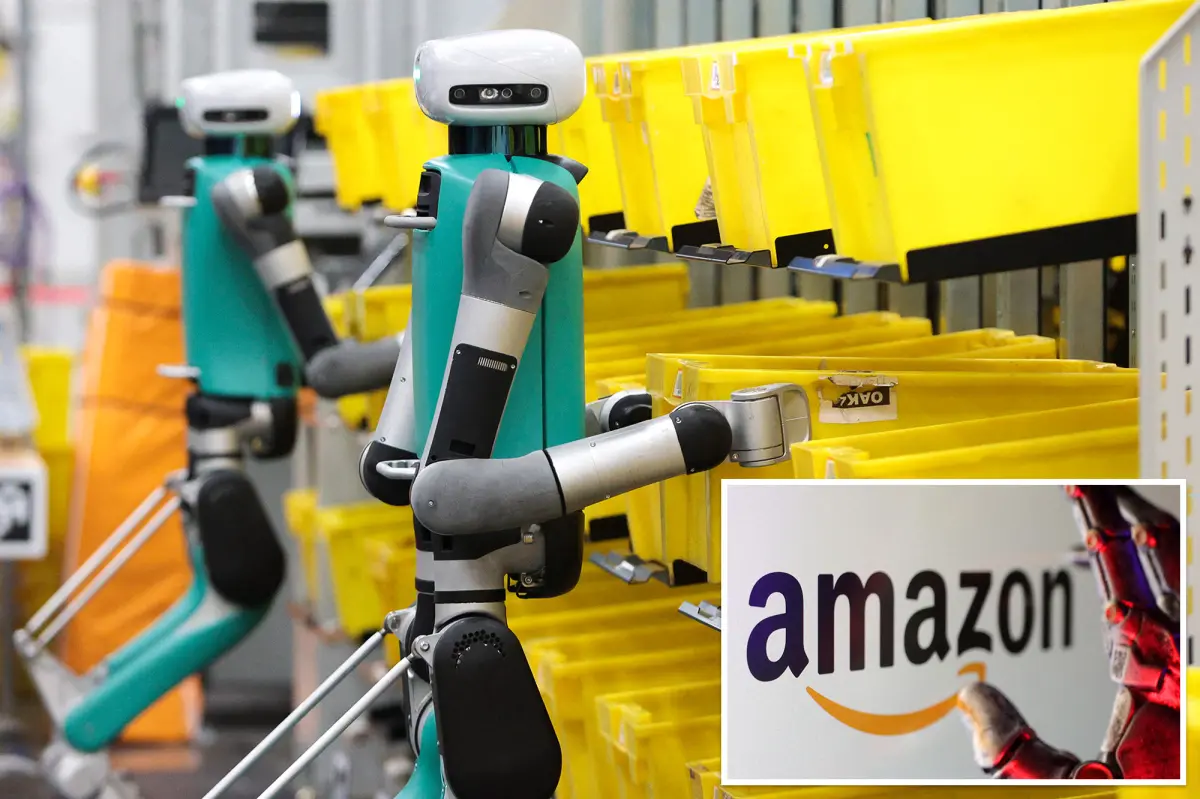Amazon’s Robot Army Replacing Blue-Collar Jobs?
The AI era is well underway, and many jobs are under threat from artificial intelligence. Blue-collar workers, who mainly perform manual labor, may seem unaffected for now—after all, AI can’t mow lawn

The AI era is well underway, and many jobs are under threat from artificial intelligence. Blue-collar workers, who mainly perform manual labor, may seem unaffected for now—after all, AI can’t mow lawns or deliver packages, right?
But are manual labor jobs truly safe? The intelligent era isn’t just about AI—it’s about robotics too.
Amazon recently announced that it has deployed more than one million robots at its warehouses, sorting centers, and logistics hubs—nearly equal to its 1.56 million human employees. In Amazon facilities, metallic robotic arms pick items from shelves, wheeled bots transport goods for packing, and in other zones, automated systems sort and prepare items for shipping—without human involvement.
One of Amazon’s newer robots, called Vulcan, is equipped with a sense of touch and can retrieve items from multiple types of shelves. These robots are integrated into Amazon’s order fulfillment system, allowing them to work both with each other and alongside human workers.
Amazon says that about 75% of its global deliveries now involve some form of robotic assistance. Since 2015, the number of self-managed parcels handled per employee each year has increased steadily—from 175 to 3,870. Rising automation has significantly boosted productivity, and robots, unlike humans, don’t quit, strike, demand raises, or take sick days.
Amazon CEO Andy Jassy recently announced plans to expand AI use across its warehouses to optimize inventory placement and predict product demand. He also revealed that the company would reduce its total workforce in the coming years. Amazon’s current headcount is already at its lowest in 16 years.
Amazon’s robotics journey began in 2012 with its $775 million acquisition of Kiva Systems. At first, robots could only transport large, unpackaged items. With technological advancement, they now handle packaging, sorting, and other detailed tasks.
So what does this mean for human workers?
According to Amazon Robotics’ Chief Technologist Tye Brady, the company still needs a large human workforce. Robots are designed to make employees’ jobs easier—not to replace them.
For some Amazon employees, rising automation means transitioning from repetitive manual labor (like lifting, dragging, and sorting) to more skilled roles such as overseeing robotics systems. Neisha Cruz, who worked as a sorter for five years, received training and was promoted to monitor robot systems—a role that tripled her pay.
Amazon says it has trained over 700,000 workers globally for higher-paying roles, many of which involve working with robots. According to Yesh Dattatreya, a senior applied scientist at Amazon Robotics, entirely new roles are being created—such as robotics technicians. Warehouse workers are now being trained in mechatronics and robotics through apprenticeship programs.
He added that the long-term goal is to build robots that respond to human voice commands—so when someone says “unload,” a robot will autonomously remove goods from a trailer.
Disclaimer: The views in this article are from the original Creator and do not represent the views or position of Hawk Insight. The content of the article is for reference, communication and learning only, and does not constitute investment advice. If it involves copyright issues, please contact us for deletion.